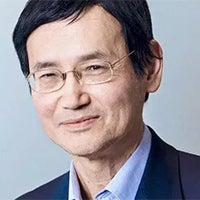I recently attended the annual Pool Re terrorism insurance market meeting in London on October 11, the first to be held in person since 2019. Any one of the presentations would have made the travel to London Bridge worthwhile.
Prior to entering the Glaziers Hall venue on the South Bank of the River Thames, I stopped at Brood in Borough Market, formerly known as Café Brood, whose staff had acted so heroically in the London Bridge terrorist knife attack of June 3, 2017.
The London Bridge incident happened within a fortnight of the terrorist attack of May 22, 2017, where a backpack bomb was detonated, killing 22 people, at the Manchester Arena at the end of a concert by American singer Ariana Grande. One son who never returned from the concert was Martyn Hett.
Martyn’s Law is the name given to the proposed U.K. Protect Duty legislation aimed at ensuring that those who operate the places and spaces in which people live, work, and socialize must take greater security measures. This initiative honors the life of Hett, the other people killed, and the hundreds injured, by terrorists in the U.K. in 2017.
Figen Murray OBE, Hett’s mother, had the courage to speak at the Pool Re meeting, and needless to say, her dignified heartfelt plea for enhanced security would not have been so moving or effective on Zoom.
Modernizing Reinsurance Systems
Pool Re’s new CEO Tom Clementi explained that the U.K. Treasury had agreed on the retention of their unlimited financial guarantee, to insure against the potentially catastrophic costs of terrorist acts, but only on the basis that Pool Re finds ways to proactively return risk to the market.
Pool Re is also mandated to increase awareness and penetration of terrorism insurance across the small-to-medium enterprise (SME) community, few of which have chosen to pay for this cover.
To meet these objectives, Pool Re has come up with a rather elegant and enterprising solution, involving a switch from a facultative to a treaty reinsurance framework.
Instead of rigid pricing with limited risk differentiation, members would have the flexibility to price terrorism cover for their own policyholders: Terrorism might then be reincorporated into standard property policy wordings for little or no cost. For exposures that have little impact on treaty pricing, many more SMEs could be protected. This would be advantageous to all.
Consider a portfolio with a number of high-profile commercial properties in London and Manchester. There is a propensity for terrorists to seek media publicity and target places with name recognition: terrorism is the language of being noticed.
Accordingly, SMEs with premises distant from main urban targets are less exposed but might take up the offer of conventional terrorism coverage, which hitherto has been unduly costly on a facultative basis.
Pool Re bifurcates terrorism between conventional and non-conventional risk. Members may increase retentions for conventional terrorism, thereby returning risk to the market, without taking on any additional exposure to cyber-triggered or chemical, biological, radiological, and nuclear (CBRN) terrorism.
At the October meeting, Pool Re’s Chief Underwriting Officer Steve Coates enthusiastically filled in details of what would be the most significant change in three decades of Pool Re’s history. Steve Burr, chief actuary at Pool Re, outlined the simulation process by which treaty pricing would be calculated. This type of elaborate portfolio-specific terrorism risk analysis demonstrates the practical value of risk quantification for mitigating terrorism risk and increasing national resilience.
Many Threats, No Room for Complacency
A key input into the simulation process is the terrorism threat. Addressing this at the Pool Re meeting was Tom Hurd, former director-general of the U.K. Office for Security and Counter-Terrorism. He highlighted the democratization of technology as a growing area of concern and cited the proliferation of drones.
Targeting of the state by right-wing extremists is a continuing threat, exacerbated by right-wing militants returning to the U.K. from fighting with the Ukraine Foreign Legion. Climate extremists were also perceived as a developing threat group.
Hurd offered special insight into the emergent threat from Russia. He noted the Russian proclivity to undertake hostile actions in the fuzzy domain below the level of actual war. He mentioned, as an example, the men in unmarked green uniforms who occupied Crimea in 2014.
In cyberspace, Russia commonly uses proxies for attacking other nations, and this may extend into the domain of physical terrorist attacks. Hurd reminded the large insurance industry audience that there are many threats and no room for complacency. Nor is there room for a failure of imagination as to what comes ahead.
The forthcoming expansion of U.K. terrorism insurance coverage presents a market opportunity for terrorism risk modelers to increase the geographical resolution of their models.
The challenge of avoiding a failure of imagination can be met by reimagining history – as most significant terrorist attacks might have happened before. The exploration of downward counterfactuals, where a plot might have had a worse outcome, is a core RMS contribution to terrorism risk analysis.
Find out more about RMS® Terrorism Modeling.








